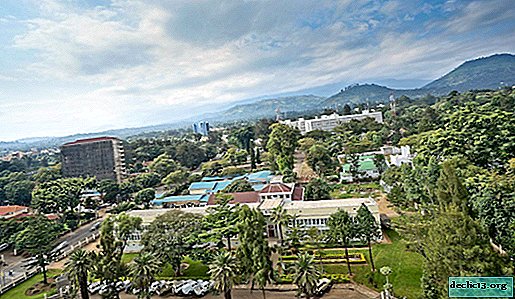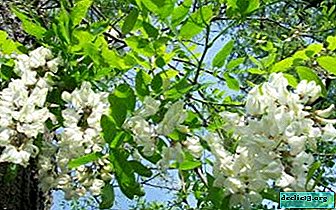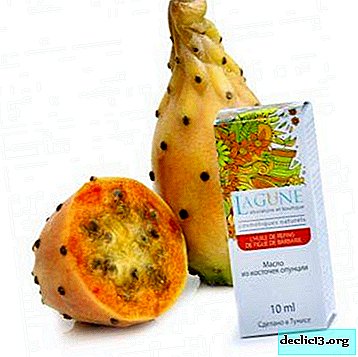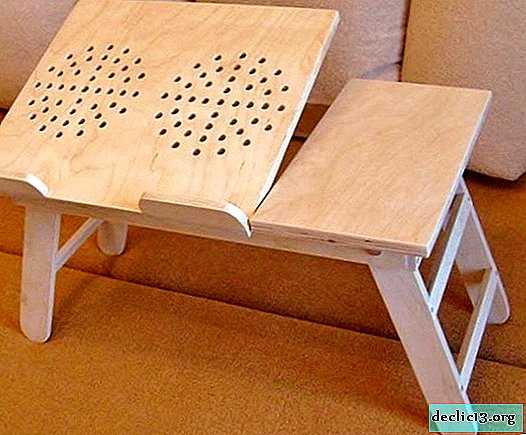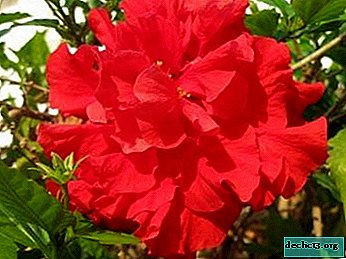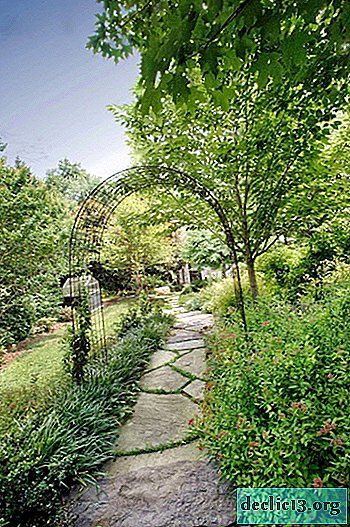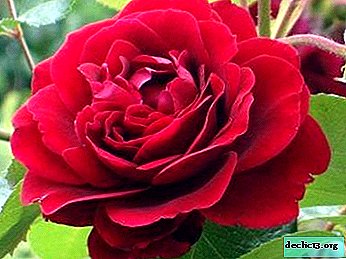Kalanchoe does not bloom at home: what to do and what kind of plant care is required?
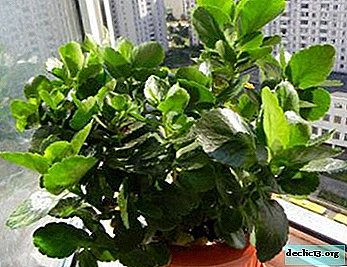
When we see the blossoming Kalanchoe, of course, we feel a sense of delight - still, beautiful, juicy, dense leaves and a whole cloud of flowers soars above them.
Of course, I would like such beauty to be present constantly. But, unfortunately, this is not always the case. They bought it, brought it home, the plant blooms for a while and pleases everyone, but then the rest period came and that’s all. The period drags on, Kalanchoe grows, stretches, and for some reason does not want to bloom again. Next, we will talk about the possible problems of this phenomenon, as well as about how to eliminate them.
Features of a decorative plant
On a note. Kalanchoe is a very interesting plant, one might say unique, because nature endowed it with healing properties (a whole home medicine cabinet is concentrated in this plant) and decorative.There are many varieties of this plant - more than two hundred species, and now scientists continue to modify it, get new varieties. The main feature of Kalanchoe is the division into medicinal and flowering species.
Types of flower and photo
Naturally, all varieties cannot be described, since there are too many of them, but the most common ones can be distinguished and shown in the photo.
Blossomfeld
For home cultivation, a low shrub with leaves of egg-shaped, dark green color is selected. The inflorescence is a lush panicle of different colors: white, pink, yellow, red (in nature, only white flowers are found).

Behar
Wedge-shaped leaves of olive color (with a small fluff), blooms medium-sized yellow flowers. The flower stalk is very extended (reaches 60 cm), the plant requires frequent pruning.

Fiery
The leaves are dark green, egg-shaped, taper to the stem, this is a very decorative bush - the flowers are bright red-orange, double, flowering is quite long.

Terry
The leaves are oval green, terry flowers, medium size, bright pink.

Rosalina mix
The leaves are oval, the plant is small, we can say - miniature, but its flowering is very stormy and long, the flowers are diverse in color (red, pink, yellow, white, violet).

Flowering period
With the onset of autumn, flower buds begin to form on the plants, and flowering usually begins at the end of winter or at the very beginning of spring. Sometimes, of course, the dates can be shifted in one direction or another, but there is one rule - for Kalanchoe to start blooming, he needs a short daylight (it can be created artificially).
Reference. The duration of flowering can vary from 2 weeks to 3 months, this period a lot depends on what. Some gardeners with extra care can even admire flowering up to 2 times a year.It is also important to know about the intricacies of caring for flowering Kalanchoe. Tips on how to make this plant bloom at home can be found in our material.
Possible problems
Of course, everyone wants to get to the truth and find out the reason - what happens to the flower, why such a seemingly unpretentious flower, which should bloom “forever”, completely stops doing it. Let's get it right.
It is worth starting to note that when blooming Kalanchoe is being prepared for sale, they are specially engaged in distillation, that is, artificially induce the plant to bloom. Moreover, everyone accurately calculates - the plants are planted in a certain soil with the addition of nutrients and fertilizers, so that the flower blooms beautifully for about two months. But after this, his strength was running out, he did his best and now we need to try to Kalanchoe bloomed again.
There are two options for the development of a plant after “flowering” flowering - it does not bloom repeatedly, but only builds up green mass, that is, leaves grow or the plant is pulled up strongly. About how to achieve abundant flowering of Kalanchoe, after its purchase, we talked about in our material.
Only leaves grow
Sometimes this situation turns out - a good lush bush gives only foliage, but the buds are in no hurry to be laid, in this case the most probable reason is that the plant is overfed with fertilizers. Naturally, Kalanchoe nutrition is needed, but very little, everything is strictly dosed. Also, the reason may be in the wrong temperature regime.
Stretches up
 The shoots of blooming Kalanchoe stretched up, and there they become even thinner, buds do not plant - in the first place, this comes from a lack of light.
The shoots of blooming Kalanchoe stretched up, and there they become even thinner, buds do not plant - in the first place, this comes from a lack of light.
Sometimes a bush begins to lose its lower leaves and an ugly bare trunk is obtained and there are few leaves at the very top - this situation may arise due to too much watering - again the plant is forced to survive as it can, Kalanchoe does not need a lot of water, because this is succulent, and many try to water it from the heart.
This can also happen due to the fact that the plant does not cut, its appearance does not form, everything is left to chance.
Remedies
What to do to exclude the reasons for the unwillingness of the plant to bloom, now we will decide. The main important points for ensuring repeated flowering of the plant:
- Pruning - a month later, after the flowering is completely over, the plant needs to be pruned, and pruned cardinally, all elongated (including lignified) shoots need to be shortened to the height we need, if the bush is very young, then you need to pinch all strong growth points (how to prune Kalanchoe?) .
Due to this, the plant will cease to stretch, and, on the contrary, will begin to form a good crown (there will be a lot of new side branches at the top, on which buds will be laid later). Pruning is done in spring and summer, but not in the autumn-winter period, when flower buds are already beginning to be laid.
- Temperature - in the period suitable for the formation of buds (when the daylight hours are reduced (usually from mid-autumn to the end of winter), it is necessary to ensure a temperature within 20 degrees at night and 27 degrees during the day, this is a comfortable temperature for the proper formation and development of flower buds.
- Air - It is important to eliminate drafts.
- Lighting - during the dormant period (approximately from March to September), it is necessary to provide the plant with intense lighting, but on the hottest summer days after dinner, it is necessary to shade (to avoid burns). In winter, you don’t need to shade anything, at this time you can’t be afraid of burns, and if the plant has little light, then you will definitely need to light up the phytolamp. An ideal place to grow Kalanchoe at home is the window sill of the east window.
- Watering - in winter, it will be enough to water the plant once every two weeks and look - so that the excess water does not stagnate in the pan, and in the summertime it can be more often - about 1 time per week, but you need to look at the weather and the condition of the soil.
Important! Better to underfill than overflow - this rule should always prevail. It is necessary to water with settled water at room temperature.
- Drainage layer - Kalanchoe requires a good drainage layer.
- Top dressing - use only special succulents, and they must be diluted in half from the recommended norm. You can add them no more than once a month, you must not forget that you can fertilize plants only in spring and summer, and in winter and autumn this cannot be done.
Care
 If you know all the features and follow all the rules for caring for Kalanchoe, then there will be no problems with flowering and the plant will delight, not upset. The rules, in fact, are quite simple:
If you know all the features and follow all the rules for caring for Kalanchoe, then there will be no problems with flowering and the plant will delight, not upset. The rules, in fact, are quite simple:
- strictly observe watering standards - do not fill;
- provide proper lighting;
- Do not overdo it with top dressing;
- be sure to trim and pinch (what are the basic rules for trimming Kalanchoe?);
- observe the temperature regime.
Sometimes Kalanchoe needs a transplant. You will learn how to do this correctly in our material.
Useful video
Watch the video on how to achieve flowering in Kalanchoe:
Conclusion
What can be summed up? Do not be upset and disappointed if for some time your plant is naughty and does not want to bloom. You just need to have a little patience and try to follow all the tips and recommendations for care, to ensure comfortable conditions for Kalanchoe. Each plant, even the most unpretentious, has its own characteristics, and they need to know.


